Apulian Pumo: the symbol of Puglia
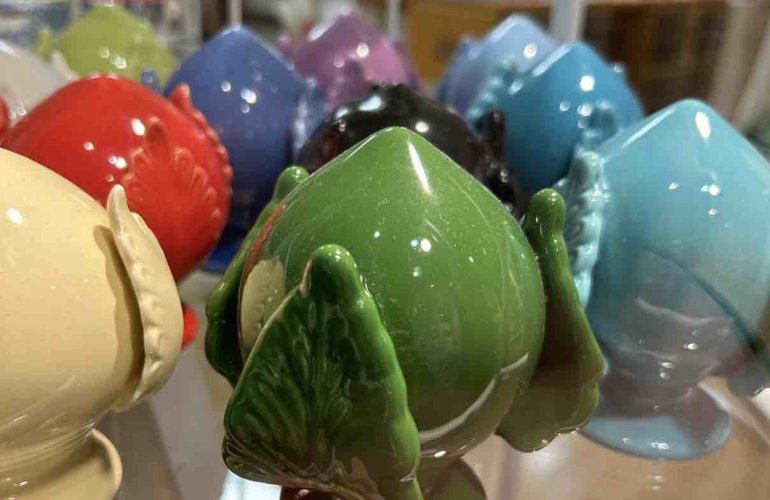
Wandering through the narrow streets of Apulian villages, one cannot help but notice the Apulian Pumi adorning balconies or cornices of houses, symbolizing good luck and protection for resident families. Apulian pumi have become the favorite souvenir for tourists to remember their wonderful vacation in Apulia, but the ceramic pumo Puglia has a history dating back to the Greek and Roman periods, and a series of meanings associated with its shape and chosen color…
Exploring the history of the Apulian Pumo: its origins, the significance of the colors used, and new uses
Pumo is the symbol of Apulian tradition, usually made of ceramic, representing the bud of the Acanthus flower, a symbol of prosperity and fertility.
Its origins date back to the Greek and Roman periods, and its name, pumo derives from the goddess Pomona, protector of all fruits. In the past, the Apulian pumo was placed at the end of balconies, always in pairs, as an auspicious sign for the family, or at the foot of the bed as a symbol of fertility.
Their presence in homes and shops in the region attests to people's deep connection to local traditions and history.
Come to Apulia and discover the Apulian Pumo
There are many variations of the Apulian pumo, starting from the number of leaves around the bud depending on the prominence of the family owning the Pumo. The color is another variable linked to specific events or moods. Pumi are often decorated with intricate and symbolic details, including floral, geometric, or figurative motifs using engraving techniques or applying small pieces of clay to create reliefs.
The Apulian pumo has been increasingly appreciated for its beauty and meaning. Over the years, it has become a decorative accessory and has taken on various uses: from room fragrance diffuser to decorative lamp to favor for special occasions.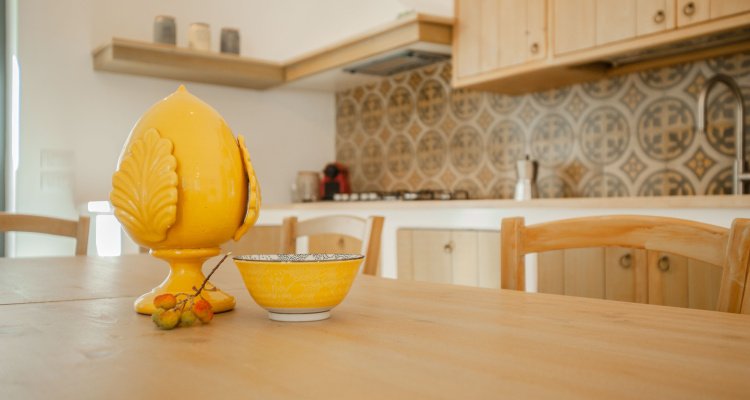 Trulli Almadari - Cisternino
Trulli Almadari - Cisternino
The Meaning of Colors in Apulian Pumo
The symbolism of the pumo is deeply rooted in Apulian culture and traditions. Each color used to paint the pumi can have symbolic significance related to protection, fertility, prosperity, and spirituality:
- White
It symbolizes purity and light, representing spiritual cleanliness and protection.
 Trulli Pumo Bianco - Ceglie Messapica
Trulli Pumo Bianco - Ceglie Messapica
- Blue
Representing the color of the sky and the sea, essential elements of Apulian life, blue symbolizes peace, tranquility, and protection from evil spirits, bringing harmony and serenity.
- Green
Associated with the connection to the earth and the fertility of the soil, green is linked to prosperity, growth, and health. It symbolizes nature, fertility, and rebirth.
- Yellow
Representing the sunlight, joy, and positive energy, yellow can also symbolize wealth and well-being. It can bring joy and vitality to the home.
- Red
Associated with passion, love, and vitality, red can also represent strength and courage. It is linked to protection from evil spirits and family prosperity.
- Brown
Symbolizing the earth and stability, brown is associated with solidity, grounding, and the protection of family and home. It can also represent a connection to the earth and roots.
These colors are commonly used to paint Apulian pumi and are often associated with ideas of good luck, protection, and prosperity. Each color contributes to the richness of symbolism and the cultural significance of this traditional decorative element of Apulia.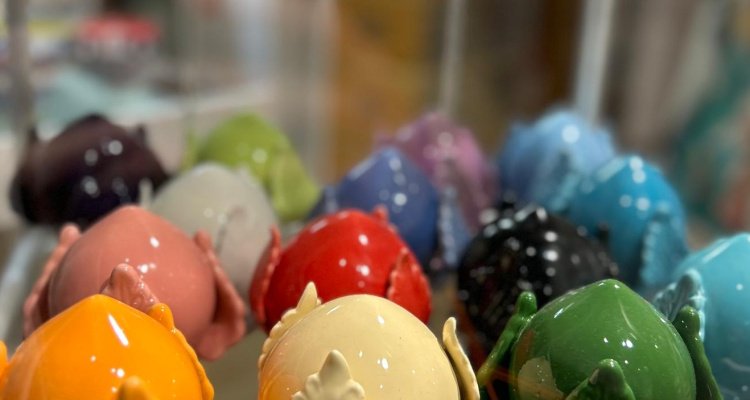
Apulian Pumo as Room Fragrance Diffusers and Decorative Lamps
Pumo is the tangible symbol of Apulian culture and identity, which continues to be passed down through generations. Its presence in homes and public places contributes to keeping the cultural roots of the region alive and celebrating its rich artistic and artisanal heritage.
Over time, Apulian pumo has taken on various uses beyond traditional ones, becoming characteristic decorative elements.
One of the most common uses of the Apulian pumo is as a room fragrance diffuser, with several variations:
- Adding scented essences or oils inside the pumo. The heat or humidity of the environment will help diffuse the scent into the air.
- Filling the Apulian pumo with a potpourri of dried flowers, spices, or aromatic herbs such as lavender, rosemary, cinnamon, or dried orange peels, adding a decorative touch to the home as well as scenting the air.
- Using scented candles inside the Apulian pumo. The wax will melt, releasing fragrance into the home.
- Placing cotton balls soaked with preferred fragrance inside the Apulian pumo, making it easy to change the scent whenever desired by simply replacing the cotton ball.
An alternative and widely used use of Apulian pumo is as decorative lamp to add a touch of tradition and originality to the home: Rifugio dei Messapi - Ceglie Messapica
Rifugio dei Messapi - Ceglie Messapica
- Pumo can become base for table lamp by mounting a stand on the top of the pumo and fitting a suitable light bulb. The light will pass through the engraved details on the pumo, creating a unique effect.
- Pumo can be used as pendant lamp by connecting them together with a supporting structure and adding a lighting system in the center. This solution is ideal above a dining table or in the living room.
- Pumo can be used as wall lamp by mounting them on a metal or wooden base. This is ideal for narrow spaces or decorating empty walls, creating a cozy and very suggestive atmosphere.
- Pumo can be used as garden lamp by inserting LED lights inside and placing them along the garden path or on the terrace table to create soft and romantic lighting during outdoor evenings.
- Pumo can be used as bedside lamp by mounting a small lamp stand above the pumo or by inserting a battery-operated light bulb inside to create a relaxing and suggestive atmosphere before going to sleep.
History and Evolution of Apulian Pumi
The history of Apulian pumo represents a fascinating blend of ancient beliefs, craftsmanship, and symbolic meanings. These objects continue to bear witness to the rich culture and tradition of Apulia, while their charm draws interest from people around the world.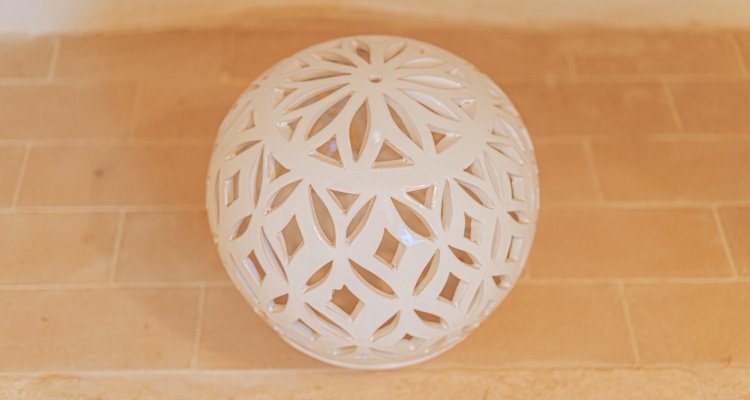
The evolution of Apulian pumo over time has seen changes in form, materials used, and decorative techniques, while their symbolic significance and popularity have remained constant.
Over the centuries, Apulian pumi have acquired a strong symbolic connotation: they are considered protective amulets against the evil eye and bringers of good luck and prosperity.
Traditionally, they are hung outside houses or used as decorations to protect the family and property. Over time, Apulian pumo has become increasingly popular as a souvenir and decorative item not only in the region of Apulia but also in other parts of Italy and the world. Its artistic beauty and symbolic significance make it appreciated by both local residents and visitors.
The art of creating pumi has been passed down from generation to generation. Local artisans in Apulia work with terracotta or ceramics to shape and decorate pumi in a variety of unique forms and styles. Each pumo is a unique piece, crafted with artisanal mastery and embellished with intricate decorative details.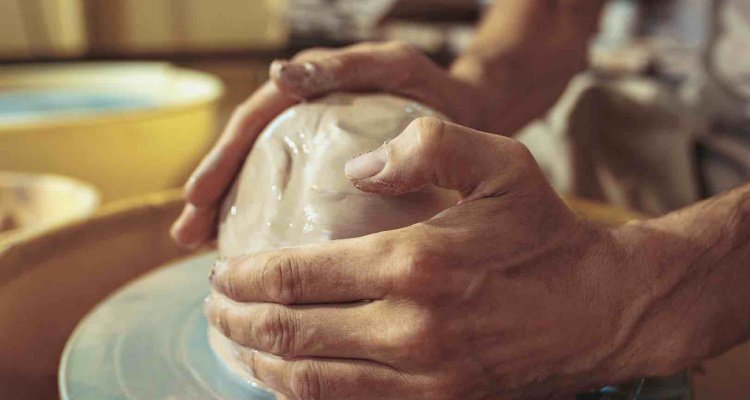
Over time, the shape and style of Apulian pumi have varied, reflecting the artistic and cultural influences of the period. The traditional form has remained popular, but new interpretations and creative variants have also emerged. The traditional material is terracotta, but other materials such as glazed ceramics, stone, or other decorative materials have also been experimented with. This diversification of materials has contributed to creating a variety of unique styles and designs.
The decorative techniques used to adorn pumi have changed over the centuries, reflecting artistic trends and the skills of local artisans. While older pumi may feature simple engraved or relief decorations, more modern versions may be decorated with colored glazes, hand-painted designs, or other more complex decorative techniques.
The evolution of Apulian pumi over time reflects a combination of tradition and innovation, keeping their cultural and artistic significance alive as they adapt to changing trends and needs.